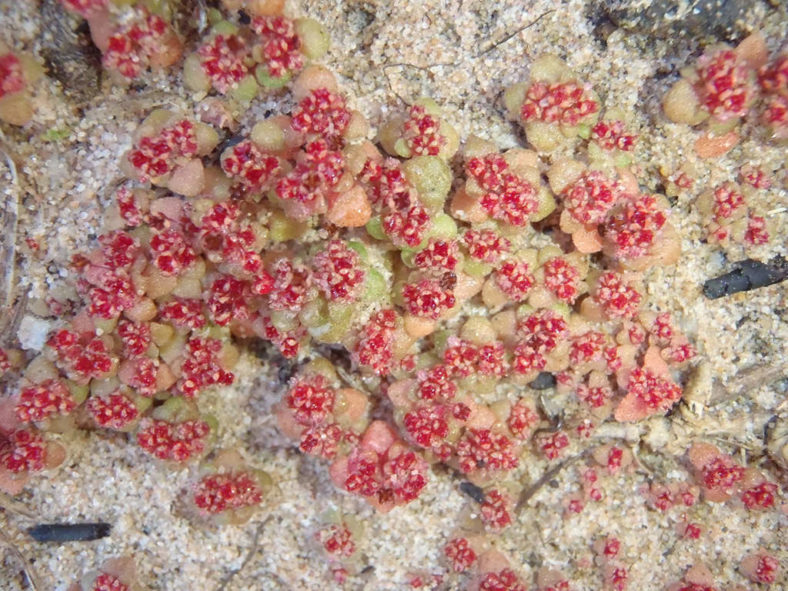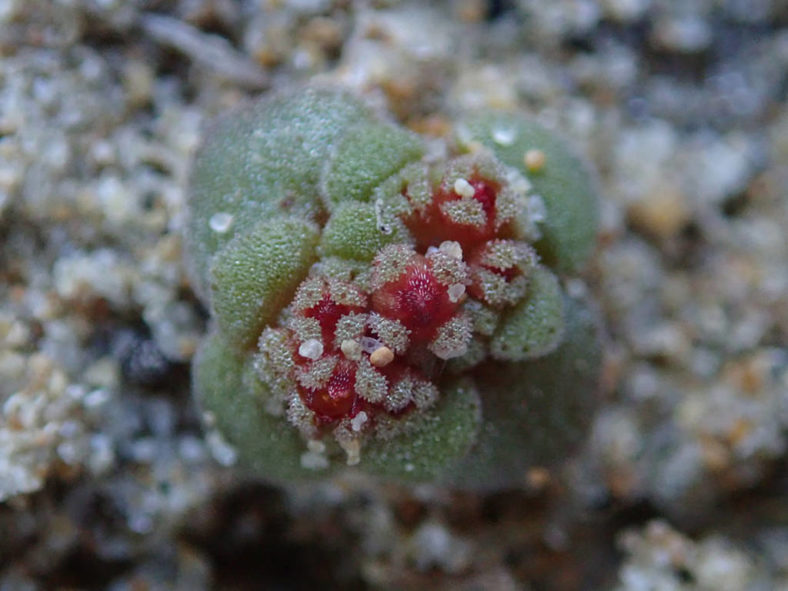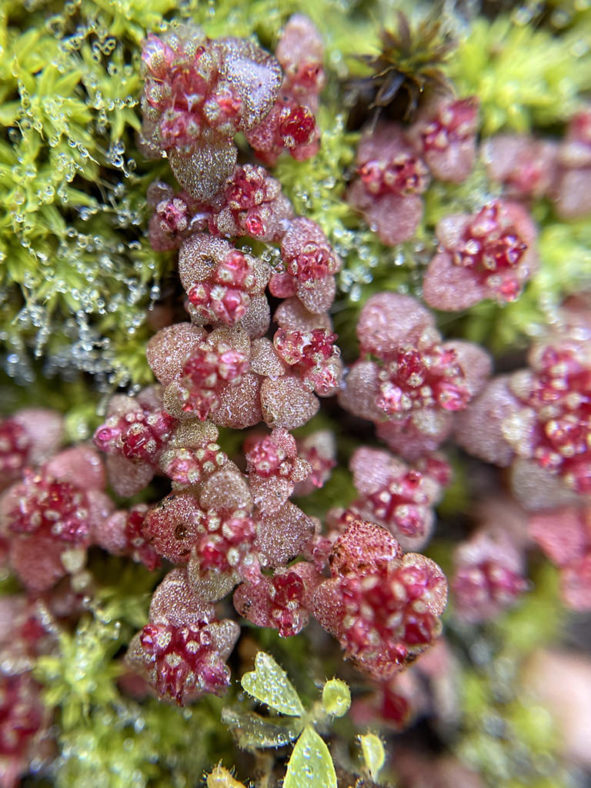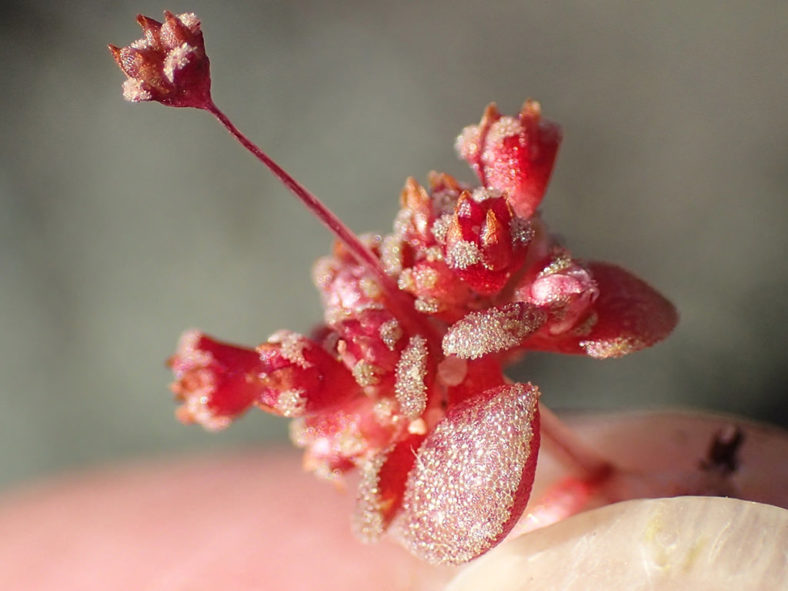Scientific Name
Crassula umbellata Thunb.
Synonym(s)
Tillaea umbellata
Scientific Classification
Family: Crassulaceae
Subfamily: Crassuloideae
Genus: Crassula
Etymology
The specific epithet "umbellata (um-bell-AY-tuh)" means "having umbels; umbellated" and refers to the arrangement of the inflorescence.
Origin
Crassula umbellata is native to South Africa (Northern Cape and Western Cape).
Description
Crassula umbellata is a dwarf, annual succulent with erect or occasionally spreading branches with small fleshy, green to reddish-brown leaves covered with papillae on the upper surface. The branches can grow up to 1.6 inches (4 cm) long. The leaves are rhombic, triangular, or obovate, measuring about 0.15 inches (0.4 cm) long and wide.
The flowers are cup-shaped, cream-colored, often tinged red, and have yellow anthers. They appear in spring arranged in small terminal clusters on short pedicels that elongate greatly in fruit.

C. umbellata is found from Clanwilliam to Cape Peninsula, mainly on the eastern side of the mountains, where the distribution area extends into the southern Great Karoo and Little Karoo. It grows in sandy soils in dry riverbeds or on open sunny flats and gravelly slopes and rarely in shaded positions.
This succulent is an annual plant that lives and dies in one growing season. However, it self-propagates by scattering seeds that grow into new plants.
Due to the similar specific epithet, C. umbellata is often confused with Crassula umbella, a perennial species.
Toxicity of Crassula umbellata
C. umbellata is nontoxic to people and pets.
Links
- Back to genus Crassula
- Succupedia: Browse succulents by Scientific Name, Common Name, Genus, Family, USDA Hardiness Zone, Origin, or cacti by Genus
Photo Gallery
Click on a photo to see a larger version.


